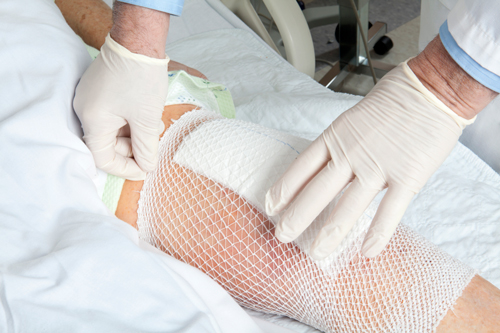
If you are scheduled to undergo knee replacement surgery, your surgeon has three procedures from which to choose. An artificial knee can be held in place, or fixed, using a cemented , noncemented or hybrid procedure. Your surgeon will decide which procedure is best for you.
The cemented procedure is the most common and produces excellent long-term results, with up to 95% of patients experiencing pain-free knee function for at least 10 years. In this procedure, a grout-like material is inserted between the bone and the prosthesis. As it hardens, it creates a strong bond that holds the artificial knee in place. This allows you to bear weight on the knee immediately. The disadvantages are that the prosthesis may loosen and/or bits of bone cement may shed into the joint, causing inflammation and destruction of bone. Both conditions require surgery to correct.
A noncemented procedure uses a porous prosthesis coated with material that stimulates bone cells to grow into it. The prosthesis and the bone are held together with screws while new bone grows and joins the implant to natural bone. Until this happens, you may be more restricted in weight bearing to enhance ingrowth of bone, making the recovery period longer. Short-term outcome studies have shown that noncemented fixation has success rates comparable to those using cement.
The hybrid procedure is designed to minimize the problems of both the cemented and noncemented procedures. The connections between the lower leg (tibia) and the prosthesis, and the kneecap (patella) and the prosthesis are cemented because this is where most noncemented joints fail. The connection between the thighbone (femur) and the prosthesis is not cemented because a strong cement-free joint tends to form here.
These three types of knee fixation all require different rehabilitation strategies to produce the most functional pain-free joint. We can work with your surgeon to develop a rehabilitation program that increases motion in the knee following surgery, prevents the muscle loss inevitable after surgery, rebuilds muscle strength and prevents stiffness of the new knee joint.









